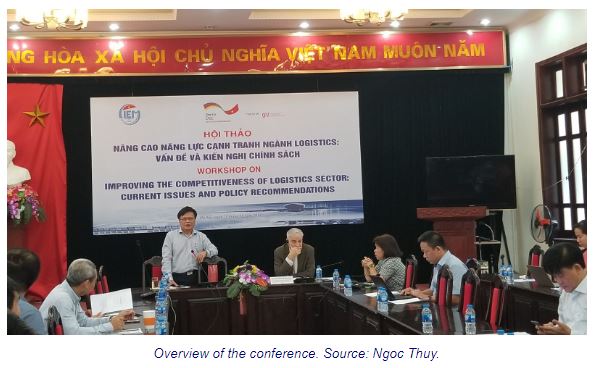Logistics remain key for Vietnam’s sustainable development: CIEM
“Logistics are the backbone of global trade,” said Nguyen Dinh Cung, CIEM’s director, referring to a conclusion made in the World Bank 2010 report.
The World Bank’s Logistics Performance Index (LPI) indicated that countries at the same level of per capita income with the best logistics performance experience additional growth of 1% in GDP and 2% in trade, Cung said at a workshop on October 29.
Improving logistics performance has therefore become a major policy objective due to its beneficial impact on the economy, Cung added.
However, Vietnam still faces numerous challenges to improve logistics competitiveness, including the lack of infrastructure development, complicated administrative procedures and low awareness of local logistics operators in applying technologies, he stressed.
Nguyen Thi Minh Thao, head of CIEM’s Business Environment and Competitiveness Department, high logistics cost is one of the main barriers for the sector’s development in Vietnam. Thao pointed to the fact that transportation cost currently accounts for 60% of total logistics cost, “in which road transport is the most expensive transportation model,” she added.
For example, a 40-foot container from Vietnam to Los Angeles would cost US$2,532, in which the domestic transportation cost is US$572, or 22.59% of the total.
Additionally, “unofficial fees contribute to 5 – 10% of transportation cost,” Thao informed, adding that inefficient business conditions and specialized inspection process are time consuming and lead to a high logistics price.
Tran Duc Nghia, director of Delta International, high transportation cost is due to the poor connectivity between transportation modals, for which Vietnam should take advantage of multi-modal transportation model.
According to Nghia, in order to increase the efficiency and environmental sustainability of logistics operations for both import-export and domestic itineraries, there is a need to better link transportation capacity (e.g., empty trucks) with transportation demand (e.g., shippers with freight to move).
“This can increase the utilization of the national truck fleet and reduce the incidence of empty backhauls, which in Vietnam is estimated as being high, with up to nearly half of all shipments returning empty for some truck carriers, particularly those from second-tier cities serving the major markets of Hanoi and Ho Chi Minh City,” Nghia stated.
Michael Krakowski, program director and chief technical advisor of the Macro-economic Reforms/Green Growth Program of German Agency for Development Co-operation (GIZ), recommended that Vietnam should take advantage of the Fourth Industrial Revolution in developing the logistics industry.
In the coming time, logistics operator should consider to apply block-chain in logistics management, which is aimed to reduce cost and enhance competitiveness, Krakowski concluded.


 Thailand
Thailand




